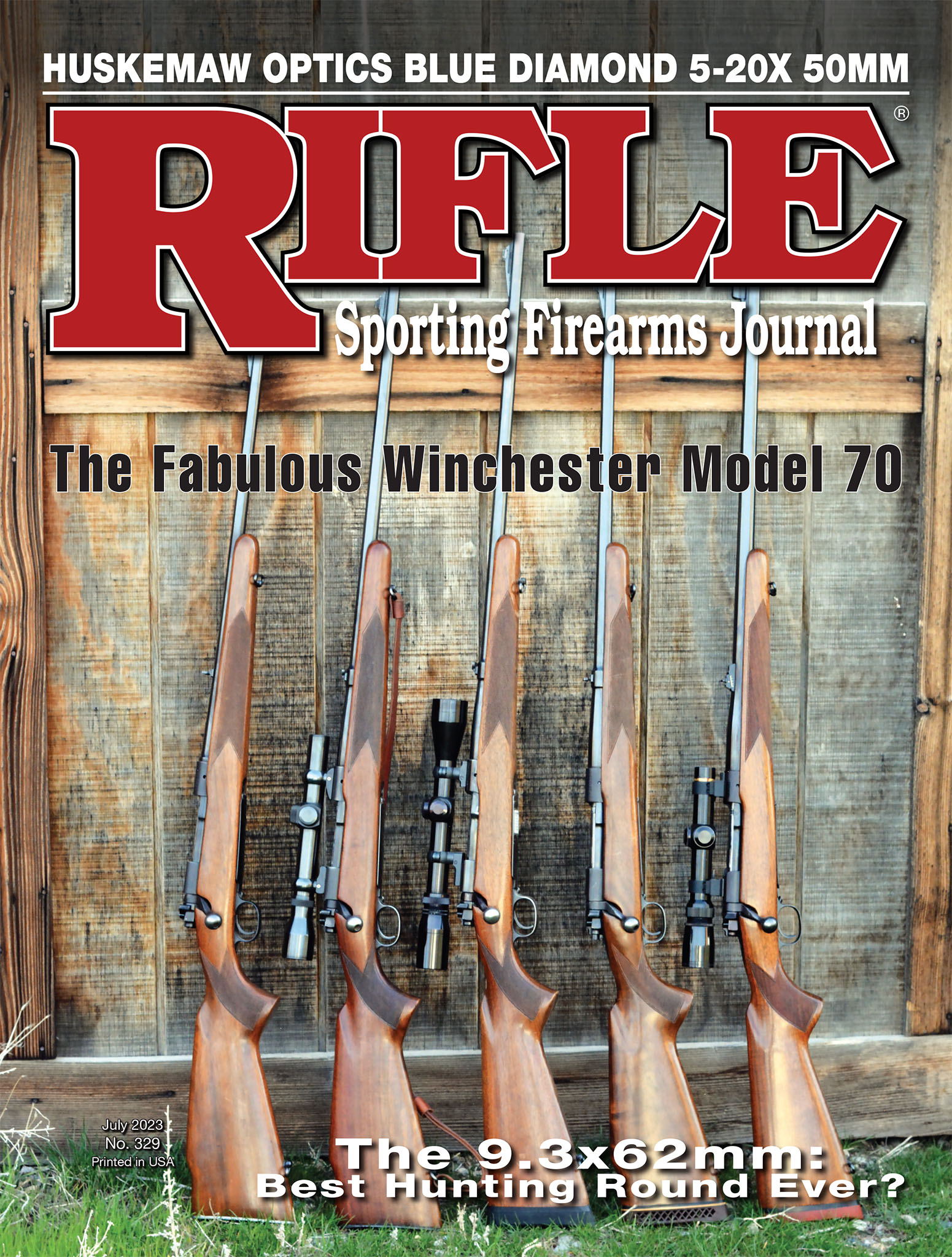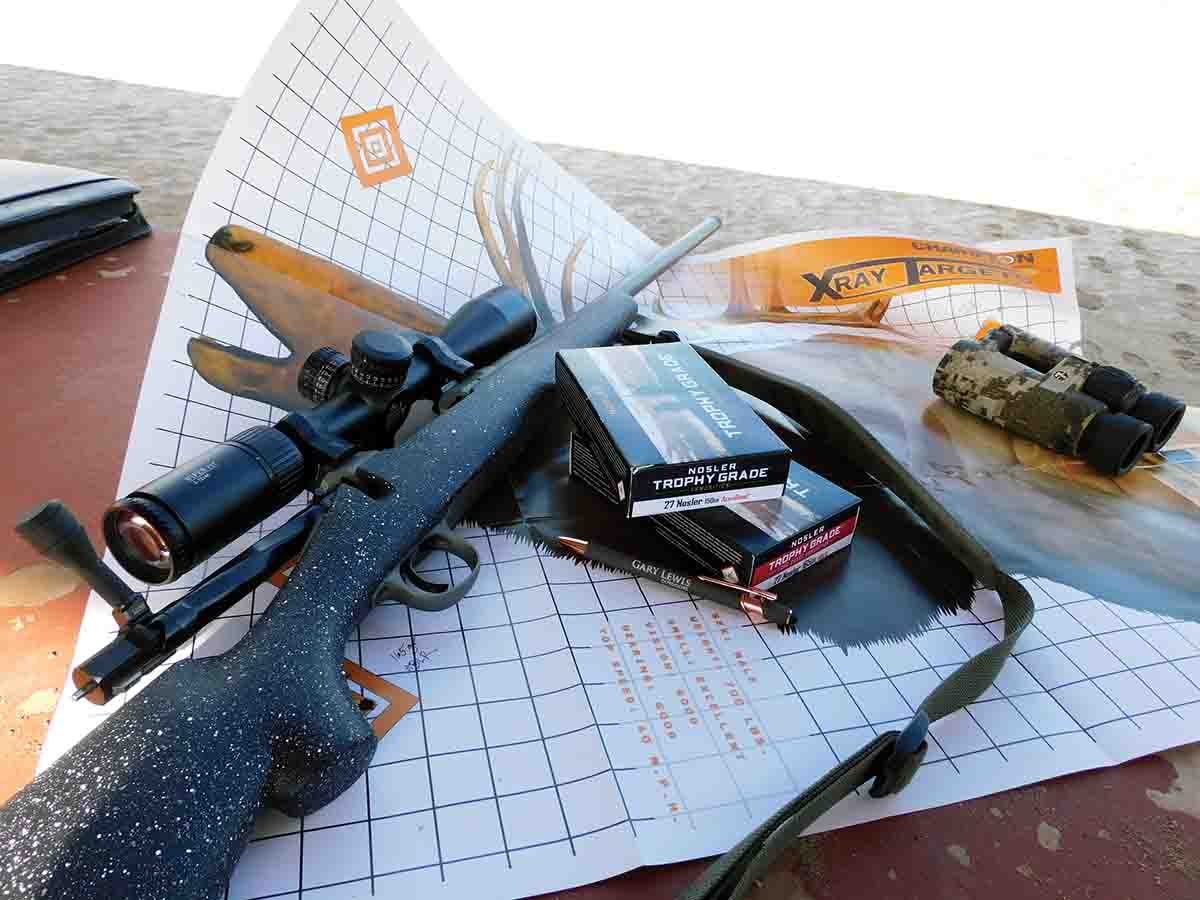
Post-hunt accuracy testing at the Central Oregon Shooting Sports Association range located near Bend, Oregon. Lewis found the Nosler 150-grain AccuBond shot very well.
My friend and fellow outdoor scribe, Chub Eastman, avoided the 270 Winchester. He didn’t like Jack O’Connor and if O’Connor said to hunt with a 270 Winchester, Chub wasn’t going to do it. Chub told me why one evening at the Geiser Grand Hotel in Baker City, Oregon, where we were staying for a big-bore/double-rifle shoot.
According to his story, Eastman, a teenager at the time, was shooting a shotgun clays tournament in Lewiston, Idaho, when he happened to out-shoot the old timers, one of whom was a curmudgeon named Jack O’Connor who fancied himself good with a shotgun. Eastman overheard the elder O’Connor say unkind things and the seed of enmity toward all things O’Connor was planted.
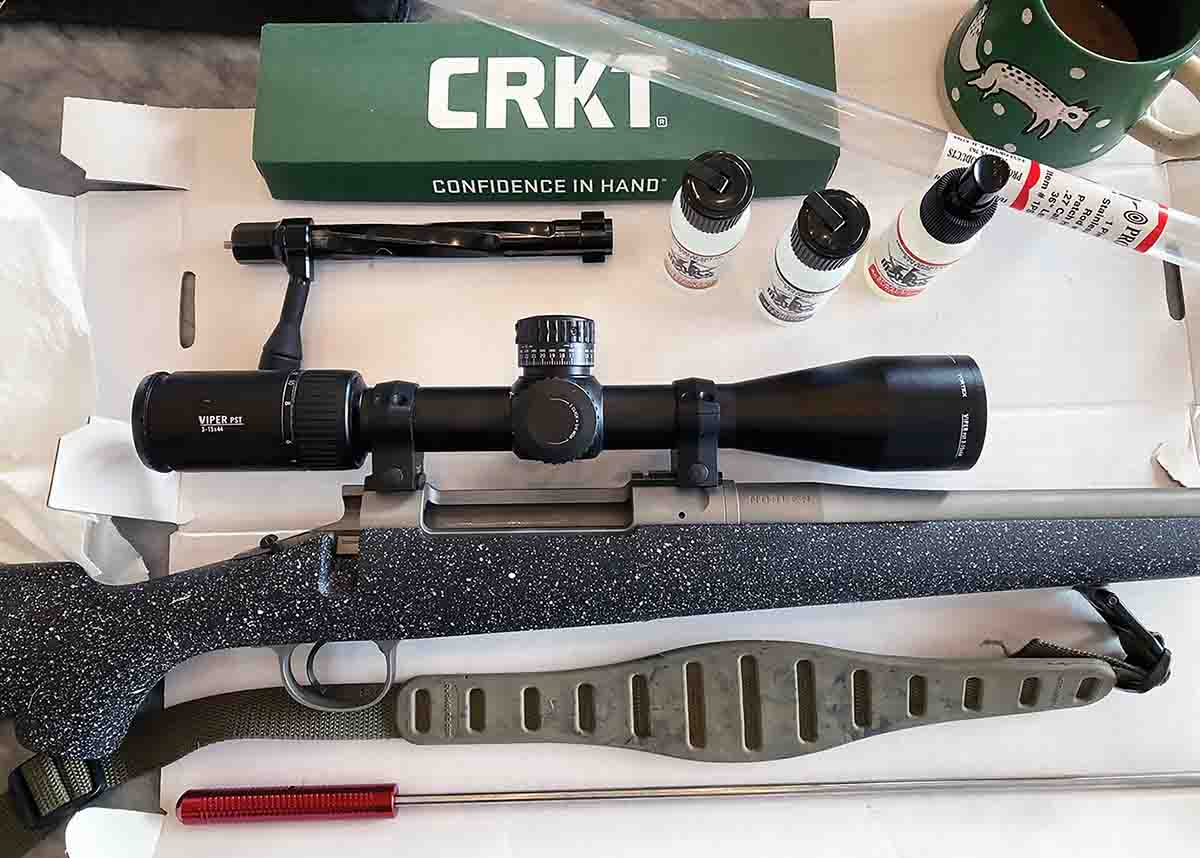
Cleaning between range accuracy sessions.
Fast-forward to Baker City and the Virtue Flat shooting range where the Oregon Trail tracks of the covered wagons can still be found in the sagebrush. Both Eastman and I were introduced the first morning to a gentleman named Bradford O’Connor, who just happened to have a couple of his father’s famous rifles in the back of his car. O’Connor opened a case and there it was, O’Connor’s famous Sheep Rifle No. 2 and a box of cartridges.
“These guns were meant to be shot,” Bradford O’Connor said, “Go ahead, take it and go shoot it.” So Chub and I shot the Sheep Rifle No. 2 and then I shot O’Connor’s 375 H&H for the rest of the day.
“I did buy a 270 once,” Eastman confessed, “but as soon as I could, I had it rebarreled into something else. Don’t remember what it was.” Chub hung on to his antipathy for the elder O’Connor, but he thought Bradford was great. Chub even consented to tour the Jack O’Connor Museum in Lewiston with me. He didn’t say so, but I know he enjoyed it.
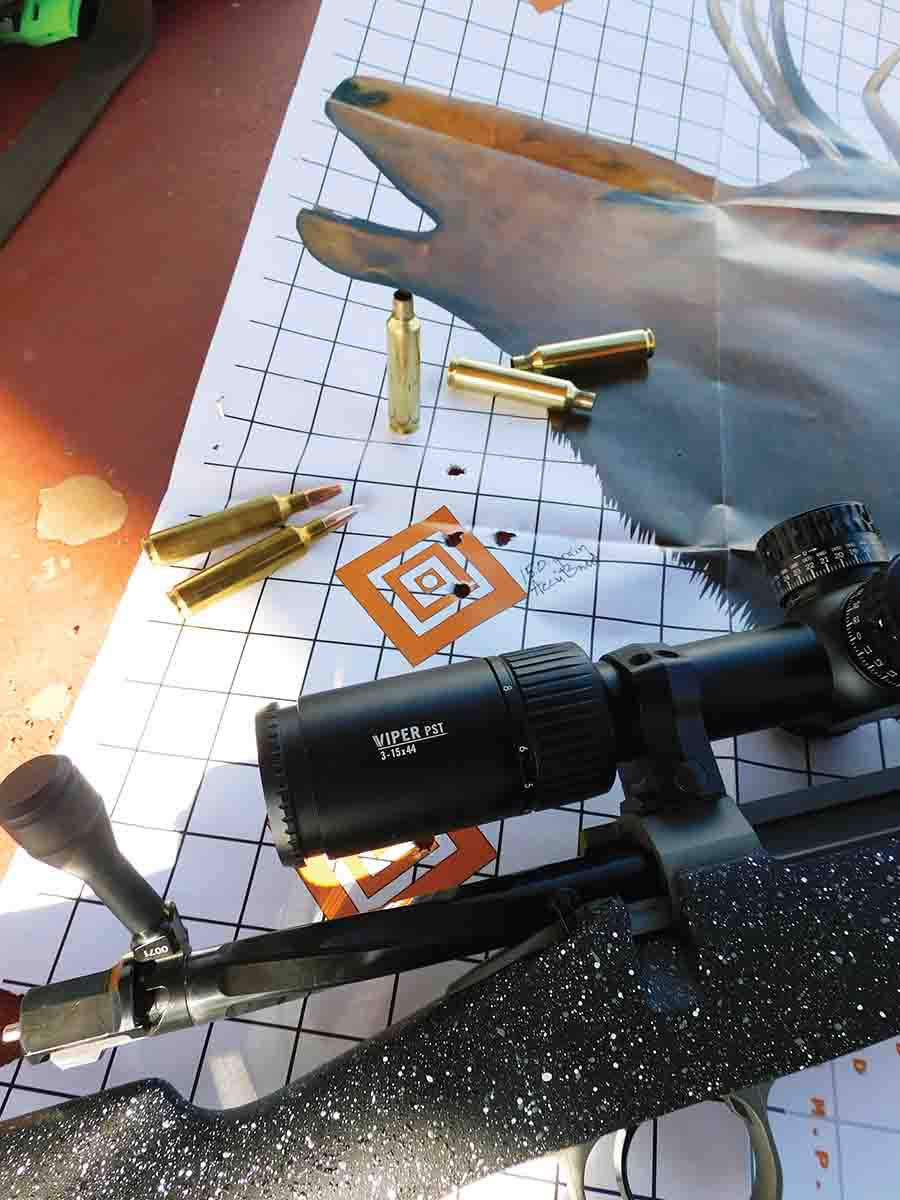
Post-hunt accuracy testing at the Central Oregon Shooting Sports Association range located near Bend, Oregon.
Today, I own two pre-’64 Model 70 270s – one was once owned by John Nosler and presented to longtime employee and family friend, Ed Neff, for working every Saturday for a year way back in 1968. I purchased the gun from Neff. The other is almost exactly the same gun, previously owned by my father-in-law, Paul Parsons, and now owned by my wife, Merrilee. She tagged a blacktail deer with it last fall. So, I can be counted among the 270 Winchester faithful and when Nosler announced the introduction of the 27 Nosler, I recognized it as a 270 for the next generation.
In 2021, Nosler Inc. introduced the Model 21, calling it a rifle for the next decade. Nosler Inc. has produced rifles for two decades, so the time was right for a new model. When the time was right for this outdoor writer to shoot a new rifle, I asked the guys in the shop for a 27 Nosler, a nod to the heritage and our shared history.
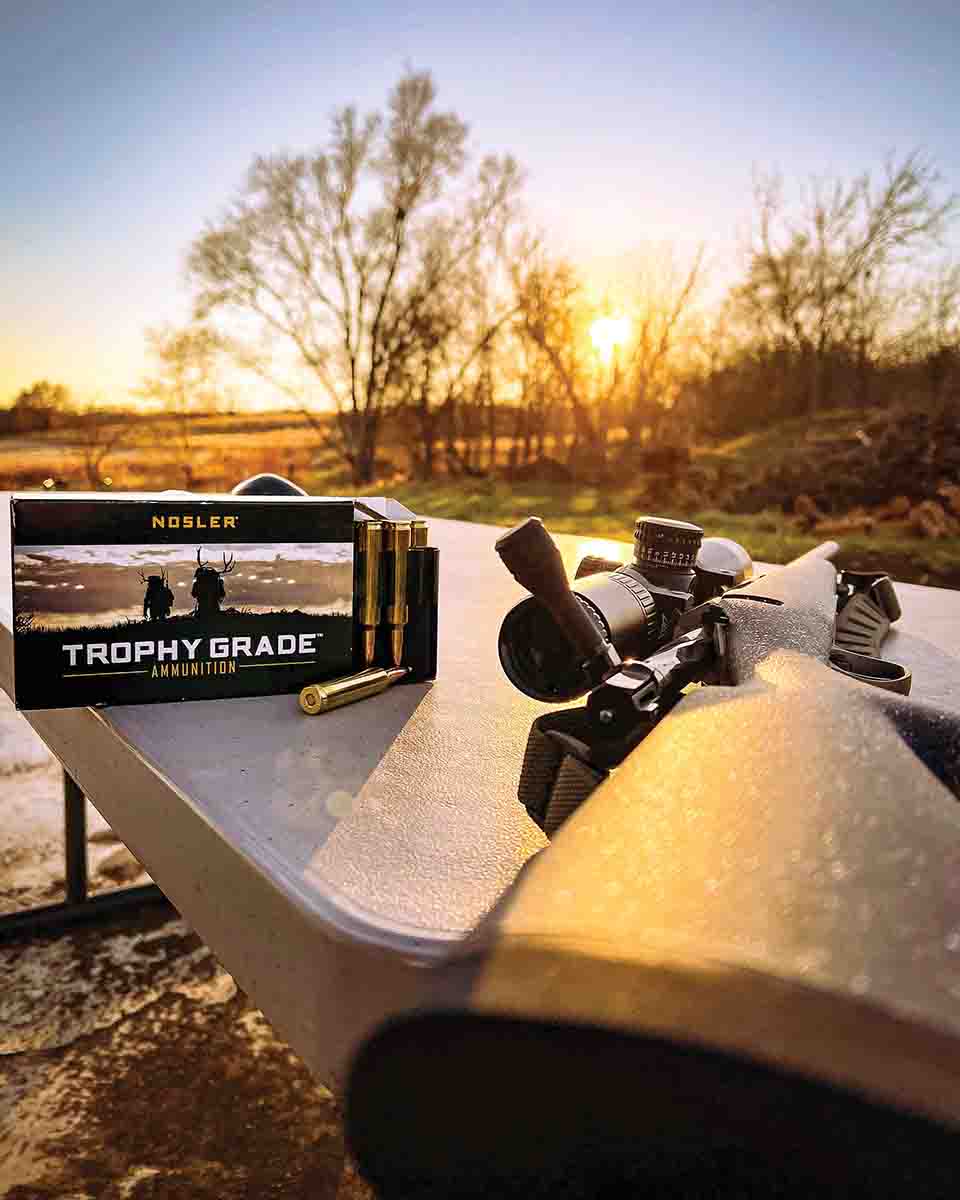
At the range in Missouri for a test shot to ensure no change of zero from one airport baggage ramp to the other.
In 2022, we were smack in the middle of an ammunition shortage, and no one feels it more acutely than the fellow who is shooting a new cartridge not likely to ever be found on the shelf of a hardware store in Hulett, Wyoming, or Mulino, Oregon, or even in bustling downtown Braymer, Missouri, with a population of 728.
When Bill at the shop called and said there was a box at the plant with my name on it, I hoped there would be ammunition with it. There were two boxes of loaded Nosler Trophy Grade, with 150-grain AccuBonds up front.
The Model 21 short-action guns are delivered with 22-inch barrels and weigh 6.8 pounds, while the long-action rifles tend to weigh between 7 and 7.1 pounds. The all-new action was designed in collaboration with the South Dakota-based Mack Brothers. In hand, the bolt cycles back and forth with a smooth function borne of the fluted design of the nitride coat and the flutes that are designed to decrease the contact of the bolt to the receiver. This is where I connect with a rifle, I want the bolt handle to nest in the palm and the bolt to glide out and in effortlessly with no binding and a minimum of movement. Constructed of 100 percent carbon fiber, the McMillan stock is built around aluminum pillars, painted with an all-weather epoxy-style textured paint and fitted with a 1-inch recoil pad and sling swivel studs. The barrels are threaded (½-28 or 5⁄8-24) and equipped with a knurled thread protector.
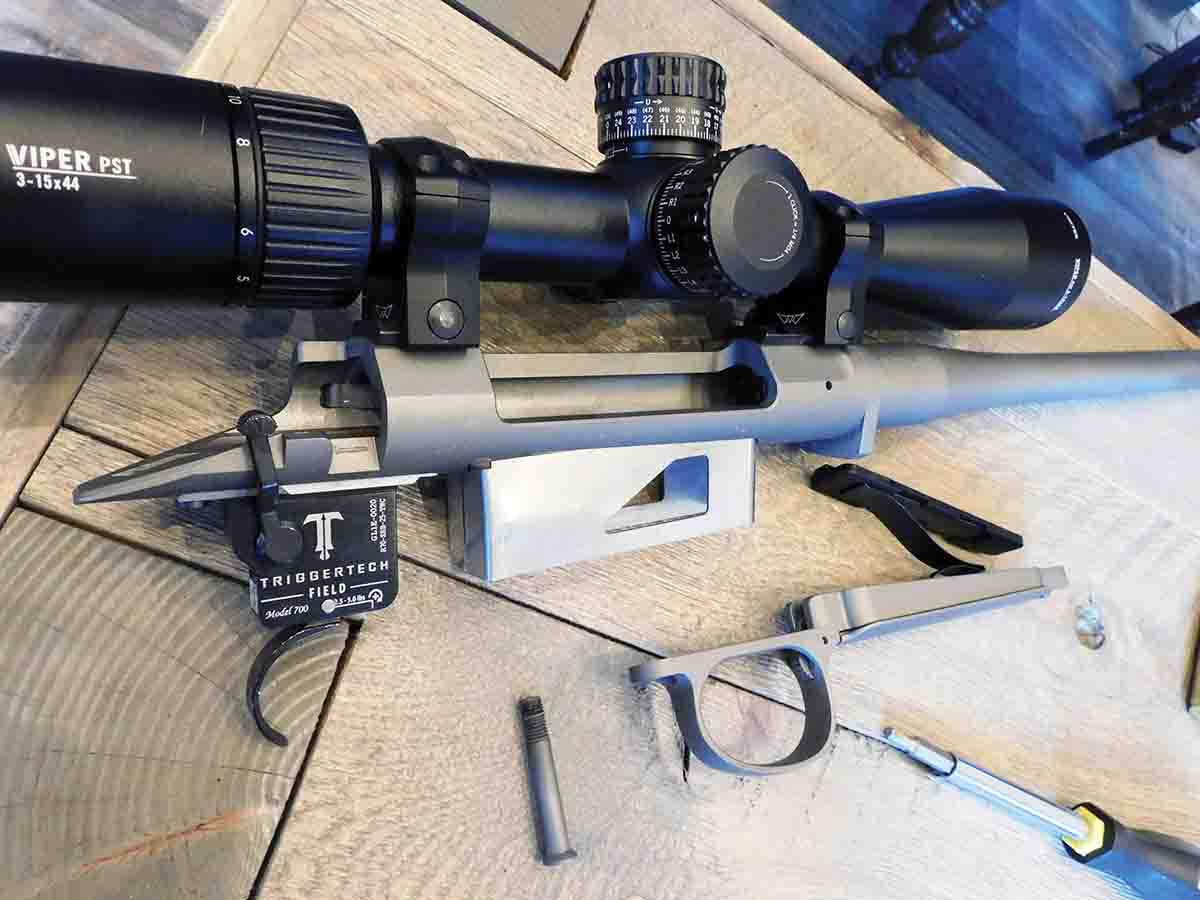
The TriggerTech Field model trigger is externally adjustable from 2.5 to 5 pounds. The trigger on the test rifle was set at 4 pounds from the factory.
The first thing I did upon getting the rifle home was check the barrel/stock fit with paper for free float. Then, I cycled the bolt, checked the chamber, thumbed the safety on and off then tried the trigger. Again and again, with the fingertip on the centerline.
The factory had installed Warne Mountain Tech mounts and a Vortex PST 3-15x 44mm scope. I put on a Quake sling in olive drab. The M21 trigger is a TriggerTech Field model made from 7075 aluminum and designed for external adjustment from 2½ to 5½ pounds. They call it frictionless release technology and it is comprised of a free-floating roller captured between the sear and the trigger. One of the things we take for granted on a rifle and that we probably should not, is the magazine release. This one is flawless. The trigger, the precise action of the bolt, the fit and the finish of all the components - this gun is better in many ways than anything in my safe. The rifle for my next decade.
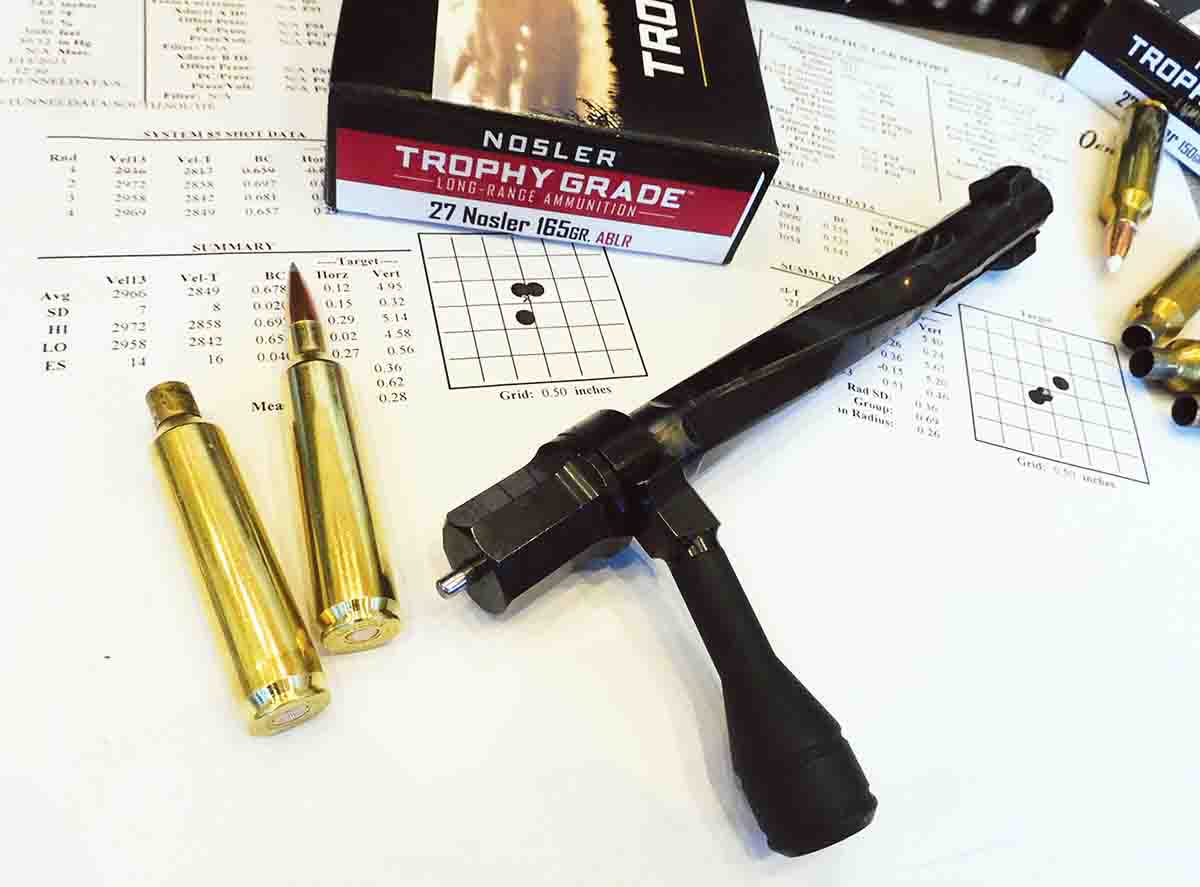
A one-piece bolt body machined from hardened 4340 chrome molybdenum. The fluted body acts to decrease contact of the bolt to the receiver. The bolt handle is easily changed out if desired and a cocking indicator is an added safety feature.
The 270 Winchester usually came with a 1:10 twist, which was optimum for a 130- to 150-grain projectiles. The 27 Nosler on the other hand, comes with a Shilen barrel and 1:8.5-inch twist to stabilize a heavier-for-caliber projectile. Inside the box with the manual and the trigger lock, I found a little note about the barrel break-in. According to the recommendation, I was supposed to shoot one round and clean for the first 10 rounds then shoot three rounds and clean, and so on. If I followed the recommended break-in, I would have exactly enough ammunition left to shoot one deer. In a year when I had three deer hunts and an ammunition shortage to survive. I decided this rifle would get an abbreviated break-in that would end when I could measure a tight three-shot group at 100 yards. That took exactly 11 rounds of measured shooting, cleaning and zeroing.
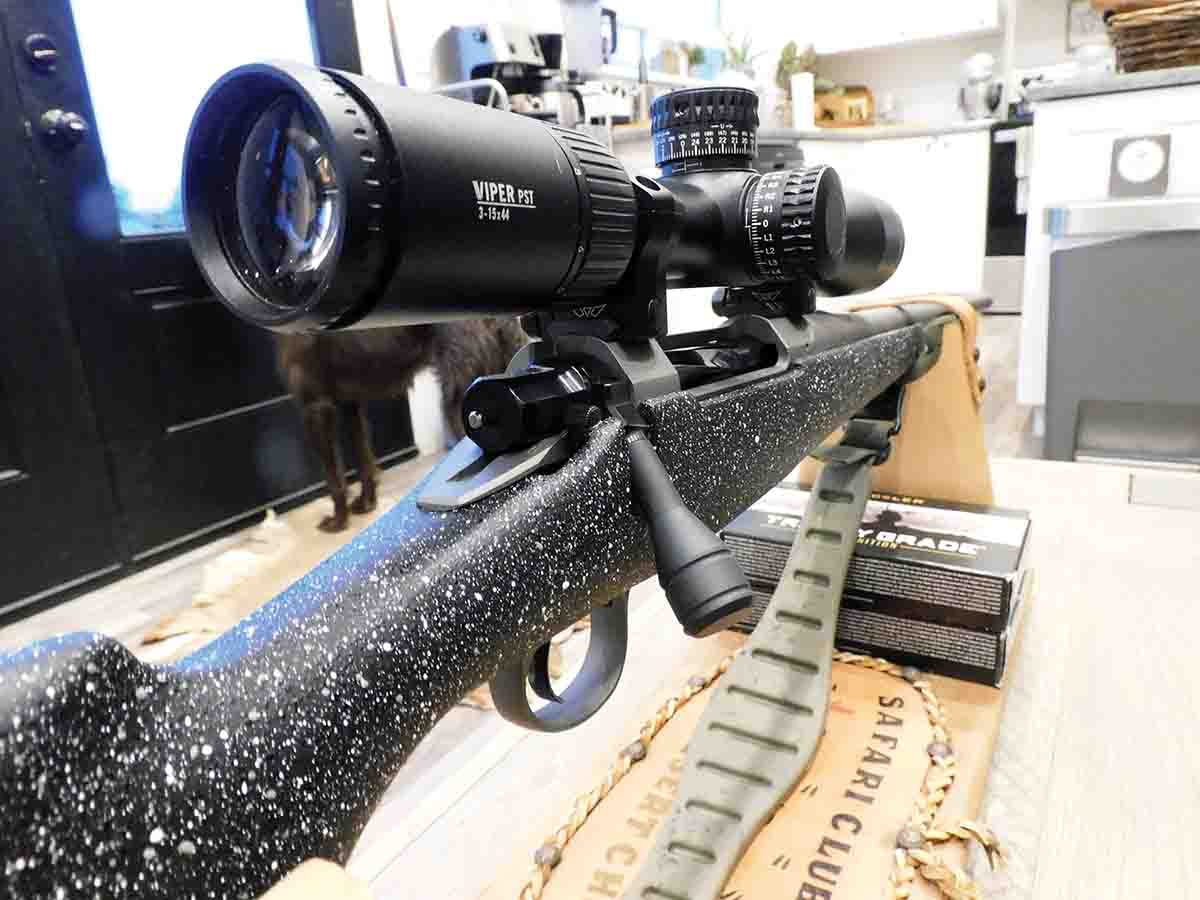
Ready for spring bear season or whatever comes next, this Nosler Model 21 has shot 43 rounds and counting. Lewis is going to call that broken-in. After deer season and another trip to the range, it was cleaned and shot two, half-inch groups.
During the first session, the best three-shot group from the sandbags was .7 inch with two holes touching. On the next trip to the range, I continued the process and shot steel plates out to 550 yards for six more rounds. With 17 rounds through the barrel, broken-in or not, the next stop was deer camp.
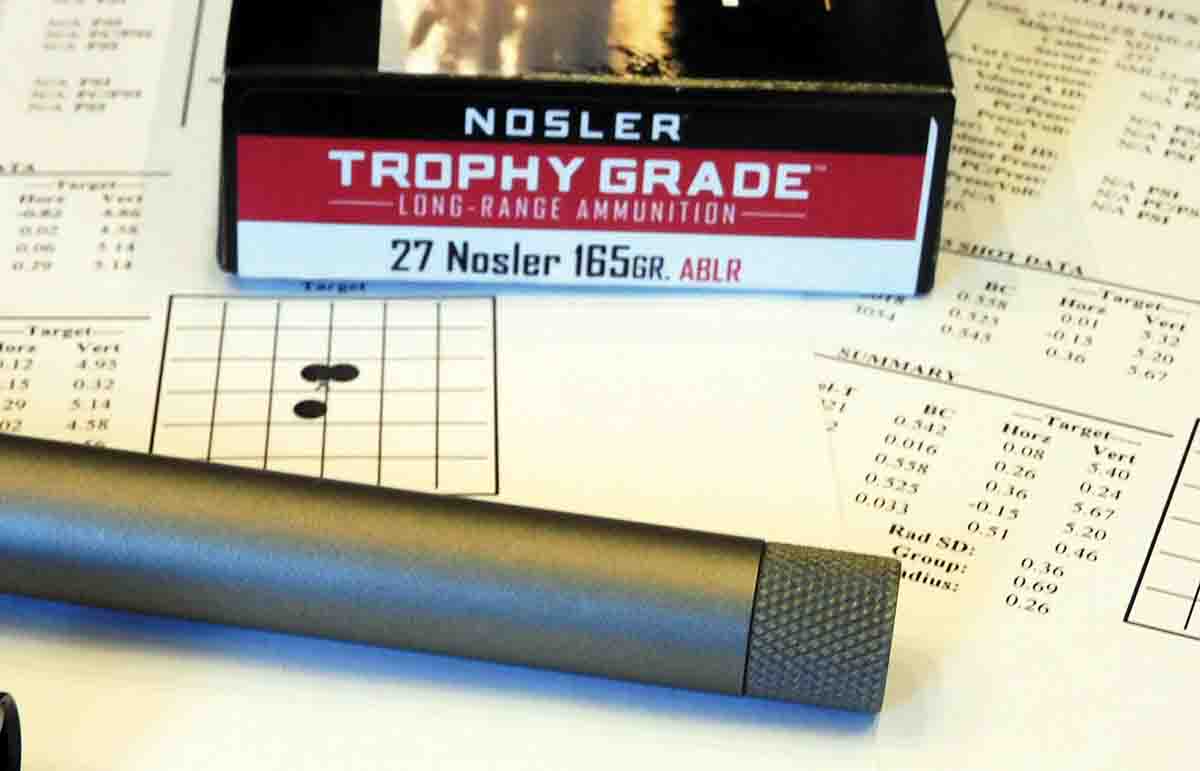
The threads on the 24-inch barrel are protected by an easy-off knurled cap.
Four fingers under the sun. Forty minutes till sunset. Up through the tall grass, up through the boulder garden. I came to a fence and slid beneath the barbed wire and coming to a knee, saw three does skylined. I waited till they fed out of sight and moved 200 yards up the slope. The more yards I could gain, the closer the shot. This was magic hour, anything could happen. I looked to the rifle with the .270 150-grain AccuBond in the big 27 Nosler case and dialed the scope to 15x, anticipating a long shot on my belly. Off to my right, I heard mule deer hooves sliding in shale.
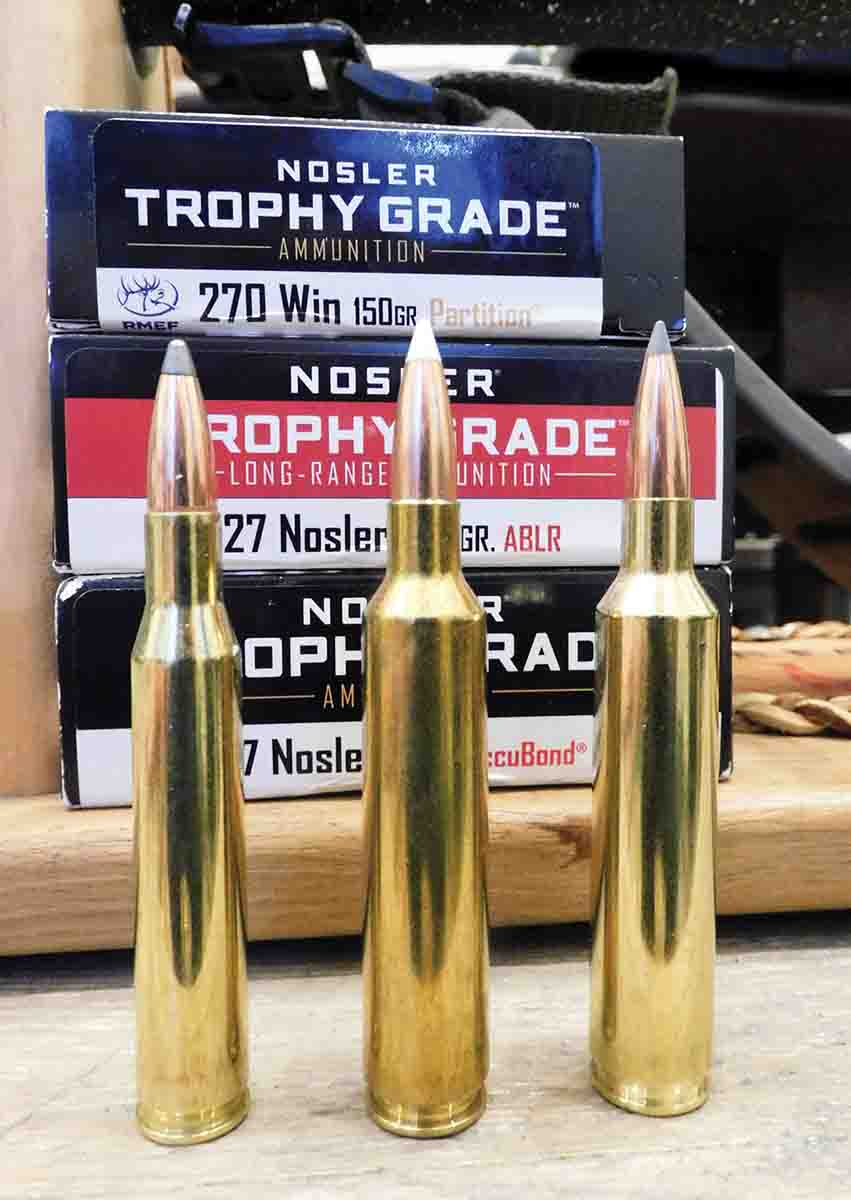
That’s a 270 Winchester on the left and the 27 Nosler in two offerings on the right.
How many times have I heard bucks slide in shale? Bucks just sound like bucks. A solid 3x3 and a tall 4x3 topped out on the hogback at a slight angle below me. The bigger buck turned to quarter at 270 yards with the rangefinder. The grass and the gravel were angled wrong for a prone shot. I knelt, propped an elbow on an unsteady knee – too much wobble in the crosshair – and dropped into a sitting position, anchored both elbows, offed the safety, stroked the trigger and felt the rifle buck. The two deer ran into the next canyon and the one on the right peeled away and spun in a half-circle and went down.
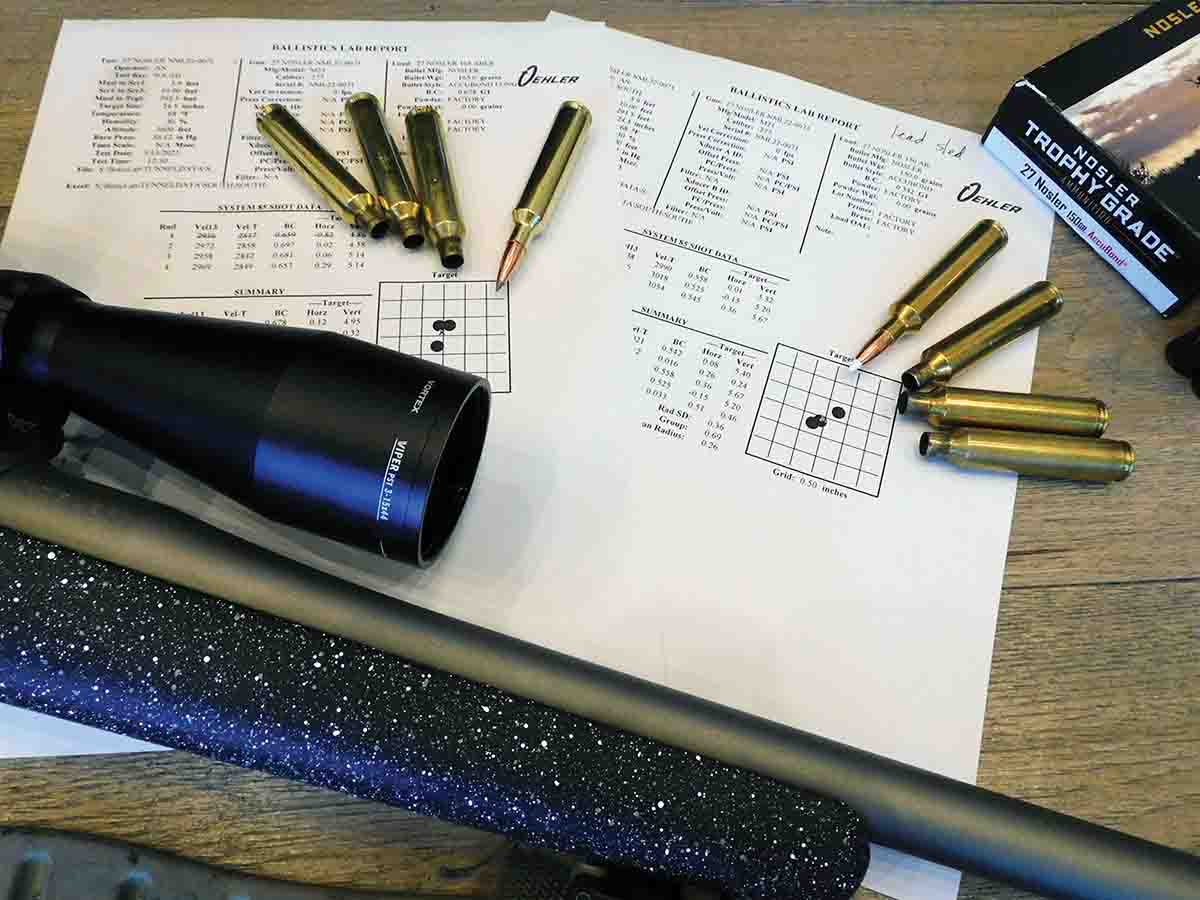
After three successful deer hunts and multiple trips to the range, the rifle went back to the factory ballistics lab for testing.
Knelt down next to the deer, I wondered if this was one of the bucks I passed up last season. The light was going away fast and I set my camera on self-timer and leaned in for a picture. A waxing moon broke over the ridge while I bent to the knife. An hour after moonrise, I bound the meat into the pack on the slope above then backed up to it and shrugged into the shoulder straps. Standing up, I slung the rifle and grabbed the deer head for the mile hike to the road in the moonlight where Dad waited with the truck.
On another hunt, a deer stepped out of the blackberries and I saw it for a buck without having to look through the binocular. But I lifted the bino and saw muscled shoulders, rut-swollen neck and tall antlers with two points on one side and three on the other. Broadside. I rested the Nosler Model 21 on the gate, guessed the range at 85 yards and anchored the crosshair in the pocket. The rifle bucked, the deer spun and trotted along the blackberries while I bolted another round in the chamber. It turned back as if to step into the brush, I shot again, offhand, the buck walked around in a circle and went down. I walked up on it in the failing light and admired a fine blacktail, grown fat on apples and blackberries and hawthorns. The first shot was the good one. Full disclosure: the second shot shaved the hair along the buck’s throat without breaking the skin.
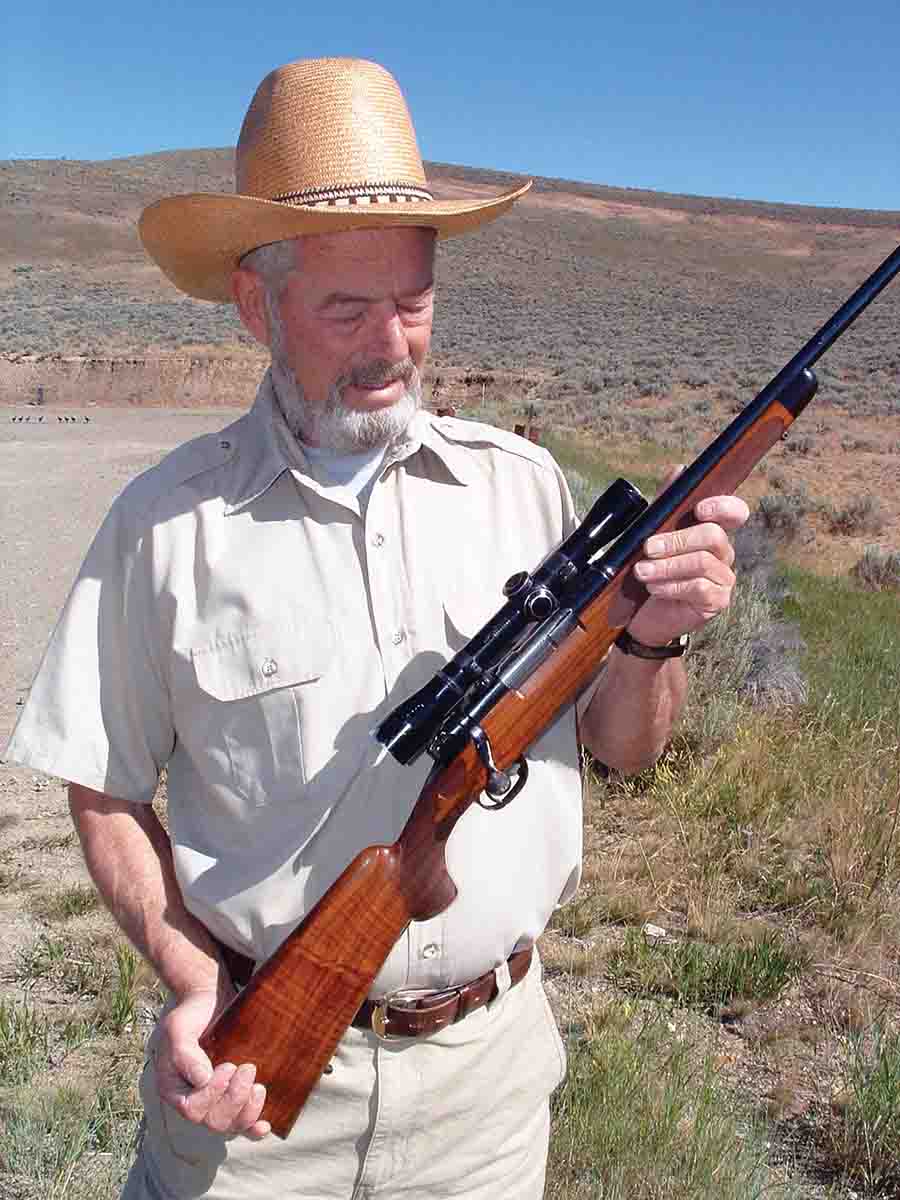
Chub Eastman at the Virtue Flat range near Baker City, Oregon, admiring Jack O’Connor’s Sheep Rifle No. 2.
For my third hunt, I was way down in the creek bottom, there was a corner of a meadow where bucks seemed to stop to feed. I watched a four-point buck (eastern count) stop there, followed by a small six-point buck. Other bucks came and went until sunset. Then a buck showed up that scattered the does and smaller bucks. Mature bucks stepped out of this one’s way. In and out of sight, we watched him and heard a brief clatter of antlers. What I could see with the binocular was heavy beams and long brow tines. But what really got me, was the head and the neck, which was as swollen as a bull’s neck. My hands were shaking with the cold and excitement. I had to switch on image stabilization to keep the 10-power SIG bino from shaking.
“If it gives me a lane, I’m going to take this one,” I told Trevor. But even as I said that, the buck vanished. There were twenty minutes of good light left and then the buck reappeared, ran a couple of younger bucks away from a doe and stopped to put its head down and feed. Now it was screened by branches, now it was more visible, now screened again. Two hundred yards. In the scope now, I followed it, waited for an opening to thread the .270-caliber bullet through. The buck stopped again, took a step and I tickled the trigger, the centerline of the index tracking through the centerline of the stock, two-and-a-half pounds of pressure. The bullet arced through the tree limbs and vines and hit, the buck ran 20 yards headlong.
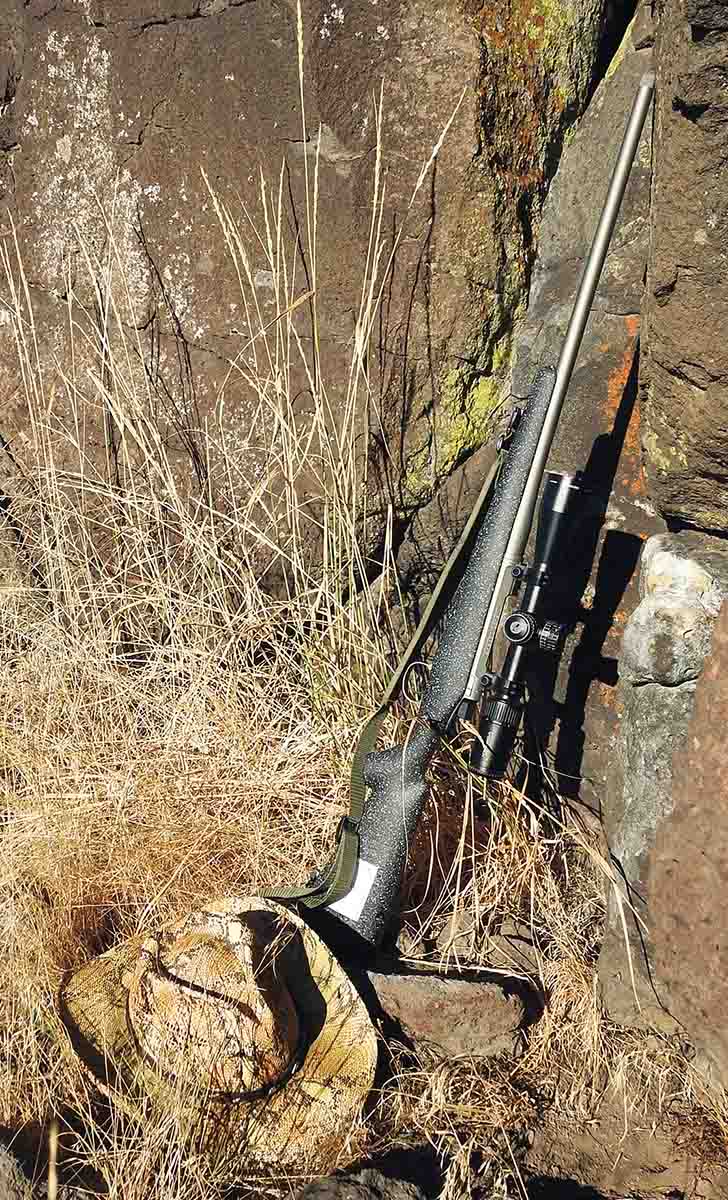
The Model 21 is offered in short action for 6.5 Creedmoor and 308 Winchester and in long-action chamberings that include 26 Nosler, 27 Nosler, 280 Ackley Improved, 28 Nosler, 300 Winchester Magnum, 30 Nosler, 33 Nosler and 375 H&H Magnum. The short-action guns are delivered with 22-inch barrels and weigh 6.8 pounds, while the long-action rifles tend to weigh between 7 and 7.1 pounds.
We found it with its head in a branch, its legs stretched out. It was the third buck in as many hunts. A mule deer, a blacktail deer and a huge whitetail buck, all taken with the 27 Nosler, back-to-back-to-back, from the Molalla River to eastern Oregon, to a creek bottom in Missouri. From one end of the Oregon Trail to the other.
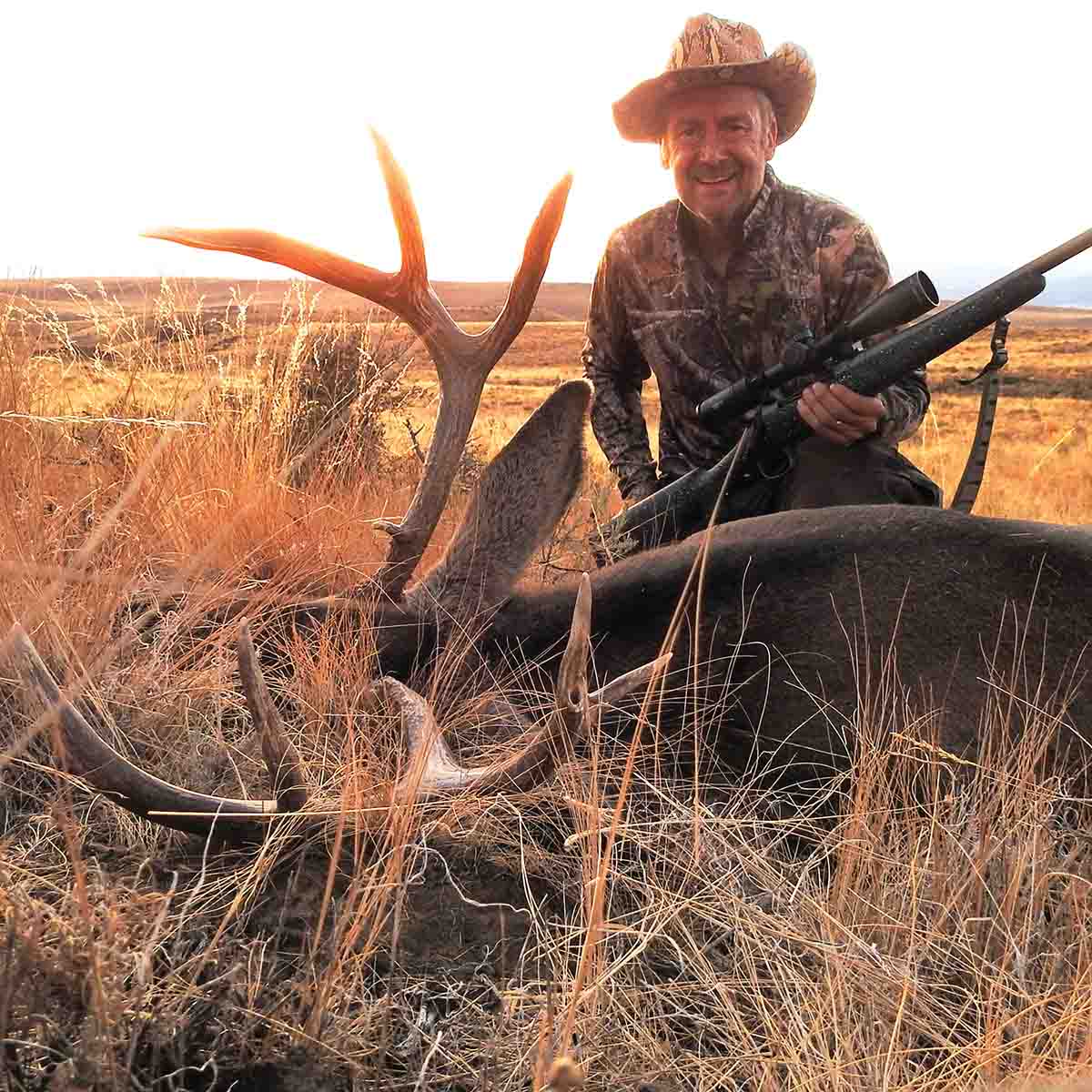
After several days of hunting, a group of bucks were located between two buttes. A 270-yard shot and a Nosler .270-caliber AccuBond anchored this buck.
I wondered how much better the gun was than me, so I cleaned the rifle and went back to the Nosler ballistics lab. The first thing to test was the trigger, which weighed in at 4 pounds. Shooting the gun from a Lead Sled and allowing time between shots for the barrel to cool, the technician shot a three-shot group with each of the factory loads I supplied. Again, I could not justify expending more rounds with a bear hunt looming the following month.
Because the data on the cartridge box was calculated with a 26-inch barrel, we adjusted our expectation for the 24-inch barrel at 100 feet per second slower. The technician shot .5-inch, three-shot groups with both loads. My best group was .7 inch from sandbags. So, yes, the gun is better than me. But we knew that already.
There’s no doubt the 27 Nosler is gaining a reputation as a long-range threat on whitetails and mule deer, and this was my second season with the cartridge, the first season with the new Model 21. This worthy heir to the 270 Winchester is equally at home as a still-hunting option in the blacktail woods. The long shots were at 270 yards for the mule deer, 200 yards for the whitetail, while on the blacktail hunt, the buck stepped out of the blackberries at 85 yards.
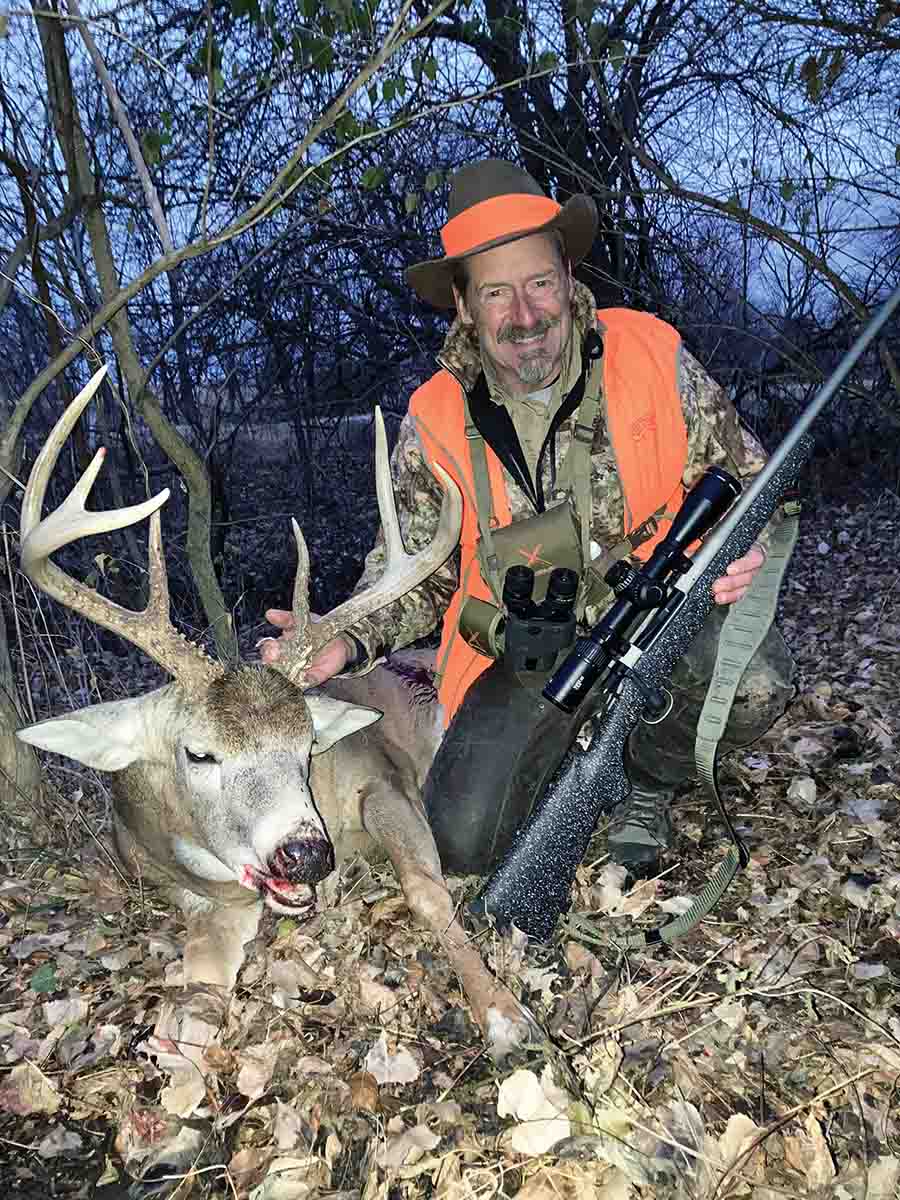
The Oregon Trail starts in Missouri and that’s where Oregonian Gary Lewis ended his deer season with a 200-yard shot through two belts of trees. This is his biggest whitetail to date.
Each hunt tested the rifle in a different way. In eastern Oregon, mule deer season was a classic mountain spot-and-stalk hunt. In western Oregon, a still hunt in the oak trees paid off. In Missouri, I sat on a stand morning and afternoon and rested the rifle on a rail.
I know I could find a lighter mountain gun. I know I could find a heavier beanfield rifle. For this traveling hunter, the Model 21 has the balance, and the modern 270 offering has the ballistics. I think Chub Eastman and Jack O’Connor would agree.
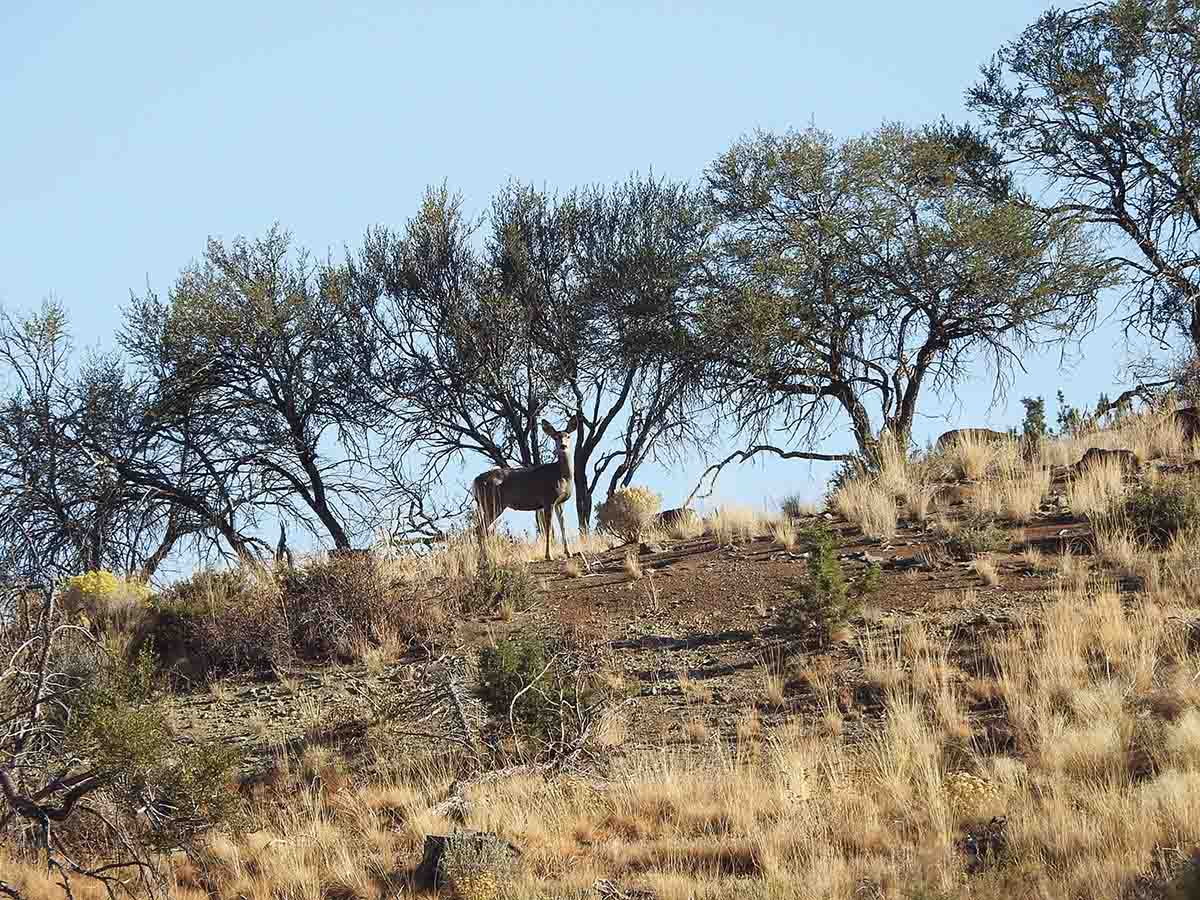
A mule deer doe surprised on a ridge.















.jpg)
.jpg)
.jpg)


